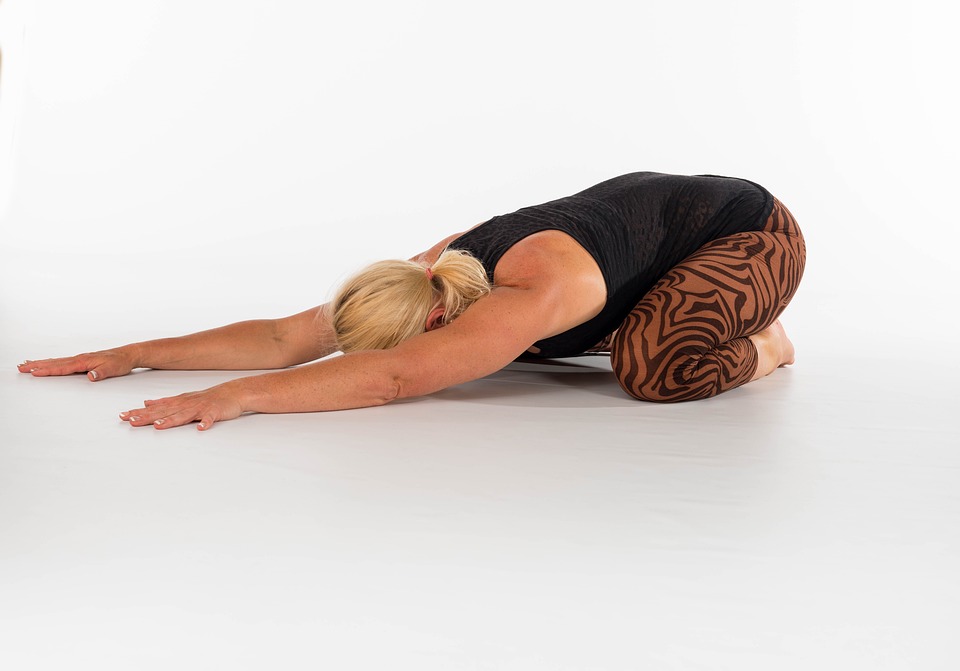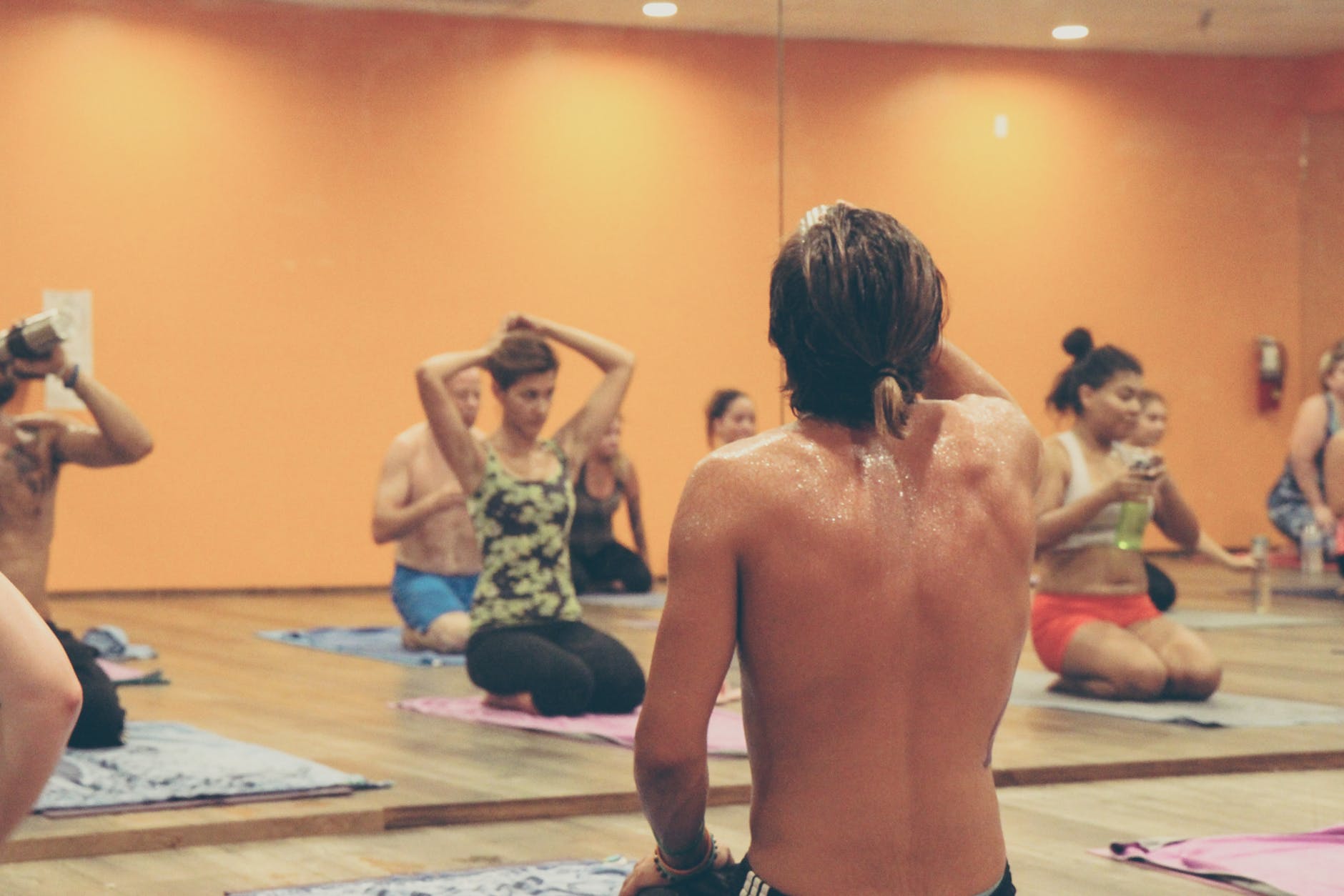
Wouldn’t you like to slow down and even reverse the effects of aging without having to workout 7 days of the week? You can improve your memory and alertness, slim down to your ideal weight and have a calm mind by mastering the art of yoga.
If you are wondering how often should you do yoga? You first need to understand the purpose of yoga. Particularly, from the context of your current lifestyle. Let me guess. You are in your 20s or 30s, have a 9-5 office job, a little overweight, and want to improve your physical, mental and spiritual health. You have made an excellent choice by taking an interest in this ancient Indian tradition.
What is the main purpose of yoga?
The main purpose of yoga is to connect an individual with the divine source or the creator of this universe–whatever you want to call it. In the west, Yoga is popularly seen as a form of exercise similar to pilates, high-intensity interval training, or tai chi. But there is a lot more to yoga. Yoga is not all about various asanas or positions, neither it is about losing weight or getting toned, the goal or purpose to truly attain the state of equanimity–the highest state.
Look, we understand what it means for the western world. Yoga can be integrated into your life as a lifestyle thing. Whether you want to lose weight, get toned, suppress the activities of the mind, or something else, you can practice yoga without getting deep into the origins of it. Having said that, knowing the origins will help you stay on the path and not get misled by the so-called online fitness gurus.
How often should you do yoga a week?
Now let’s get to the crux of the matter. If you want to practice yoga purely as an exercise routine, then twice a week is enough for maintenance of your body and thrice a week works well for improving your current physical condition. Practicing daily is fine too, but it defeats the purpose. Your goal should be to reap the complete benefits of yoga without making it a chore.
If you are doing it very often I would recommend getting a yoga mat, It would enhance your experience exponentially.
Bear in mind that there are a broad variety of yoga schools, practices, and goals. In this post, we are talking about Hatha Yoga, the most common form of yoga. This form of yoga consists largely of postures called asanas.
Having said that, experience level is another factor that you should consider before deciding the intensity and frequency of your yoga sessions. For a beginner, it will be extremely cruel to get straight into Hatha yoga or high-intensity power yoga. A beginner will not only performing these exercises difficult but may also injure themselves in the process. And yes, you can get injured doing yoga.
So, for a beginner, we would recommend taking it easy and starting with some basic yoga stretches like bridge pose, cat pose, downward dog, cobra, baby cobra, corpse pose and child’s pose. These positions will help you condition your body before you finally step into more advanced asanas. Hold each position for 30 seconds and continue to breathe while your body is stretched. Breathing will relax your body so it can stretch even further–essential to get the best out of your workout.
How long does it take to see results?
This is an interesting question as to the duration of yoga practice or how many classes one takes are not good predictors of the results one gleans off of it. The most important factor or the deciding factor when it comes to seeing results from yoga is the frequency of practice. How many times a week do you attend your yoga class? Do you skip classes on days you don’t feel great? So, discipline matters a lot.
Even in other areas of life, the same principle stands true. It’s not about how much you know about a particular skill, but how frequently you work on it. Incorporating the skills into your life requires you to make it a habit; it should become almost second nature. The same goes for yoga.
An experiment performed by the University of Maryland School of Nursing concluded that the energy one is willing to spend determines the result one gets through the practice of yoga. They also believe practicing for years on end is not mandatory. Short term results can be realized.
Also Read- Weight Loss Transformation with The Keto Diet
Does being a vegan speed up the results? Why are most yogis vegan?
Studies don’t prove the benefit of being a vegan when it comes to getting results fast. Although to relax your body and calm down the mind, ancient yogic scriptures do ask the practitioners to go 100% vegan. They called it a “Sattvic diet”. According to YogaPedia, the definition of sattvic “For something (such as food) to be considered sattvic, it should not increase disease and must be pure and natural“. So, there is your answer.
To answer your next question, yogis inherently belong to the Hindu religion. And yoga is one of the six orthodox schools of Hindu philosophical traditions. They all follow the holy book “Bhagavad Gita”. This book defines what it means to be sattvic. It prohibits you from killing or hurting another living being. Hence, yogis are usually vegan as they don’t want to hurt another living being for their gains.
What are the best types of yoga for instant weight loss? Which one offers speedy results?
1) Ashtanga

Ashtanga yoga was developed by Sri K. Pattabhi Jois and T. Krishnamacharya in the 20th century. It is sometimes called Rajyog– which means the royal path. There are the Eight Limbs of Ashtanga yoga that you can master with time. It is one of the best forms of yoga to lose weight fast. You should also note that only performing this form of yoga will do good for your body if you do not make changes to your diet. Along with yoga, diet plays a key role in weight loss.
2) Vinyasa
Vinyasa is a Sanskrit word that means a smooth transition between positions in styles of modern yoga as exercises when movement is paired with the breath. Unlike traditional yoga or Hatha yoga, vinyasa yoga requires you to move quickly without any stoppages in between two asanas or positions. It is more fluid, hence, it makes you work thrice as hard. So, if you don’t mind getting all sweaty, vinyasa yoga may be the one missing piece that will help you shed those unsightly extra pounds.
3) Bikram (Hot yoga)

Bikram yoga or yoga is one of the most controversial forms of yoga. The controversy is mainly due to troubles in the personal life of the creator Bikram Choudhury. However, there is no doubt in our mind when it comes to the efficacy and effectiveness of hot yoga. It is one of the tried and tested methods to lose weight in a simple and relatively painless way.
Hot yoga is not like a typical aerobic workout, it focuses on increasing your flexibility and core strength. That too, without working as hard. Hot yoga requires you to lock your joints and stretch your body from head to toe. Within 14 days(7-8 sessions) you will begin to shed water weight. Further, it will have a positive impact on almost every area of your life.
Let’s talk about how working out in an artificially heated room speeds up the process of weight loss. Bikram yoga can be performed in both heated and non-heated room. When it is practiced in a heated room, the heat makes it easy for your muscles to stretch, hence you perform better. In addition, the heat also makes you sweat a lot. Sweating signals your body working thrice as hard to perform a simple stretch. Hot yoga gives you a better cardio workout too.
Consequently, there are downsides to the heat too. People tend to get tired quickly, hence, their workout span shortens. In addition, heat also makes you lose more water, so, you are required to rehydrate more than usual. If you don’t manage the dehydration, then there is always a fear of muscle injury. In conclusion, Bikram yoga has both pros and cons, although it might suit certain people more than others.
Also Read – Best Yoga Mats for Sweaty Hands
How long should a yoga session be?
It all depends on whether you wish to join a class or practice yoga from the comfort of your home. A standard beginner level Hatha yoga class lasts up to 45-60 minutes. The schedule is set by the instructor, so you won’t have to worry about it. However, if you want to take a DIY approach to yoga, you can begin by following YouTube video tutorials. Free video tutorials are usually 15-20 minutes long. The more asanas you learn, the longer your home yoga sessions will grow.
Summing-up
I hope this guide on “How often should you do yoga” help you understand how the frequency of your yoga sessions affects the overall results. To reiterate, it is key to understand the true purpose of yoga. To you, it may be just a tool to lose weight or get toned but there is a lot more to it. Besides, try to follow a schedule if you want to practice yoga at home. This is all you need to know to get the best results with yoga. Try some of the basic stretches and let me know how your first yoga sessions went?
Our Review on Yoga Burn, Check out now- Yoga Burn Reviews
